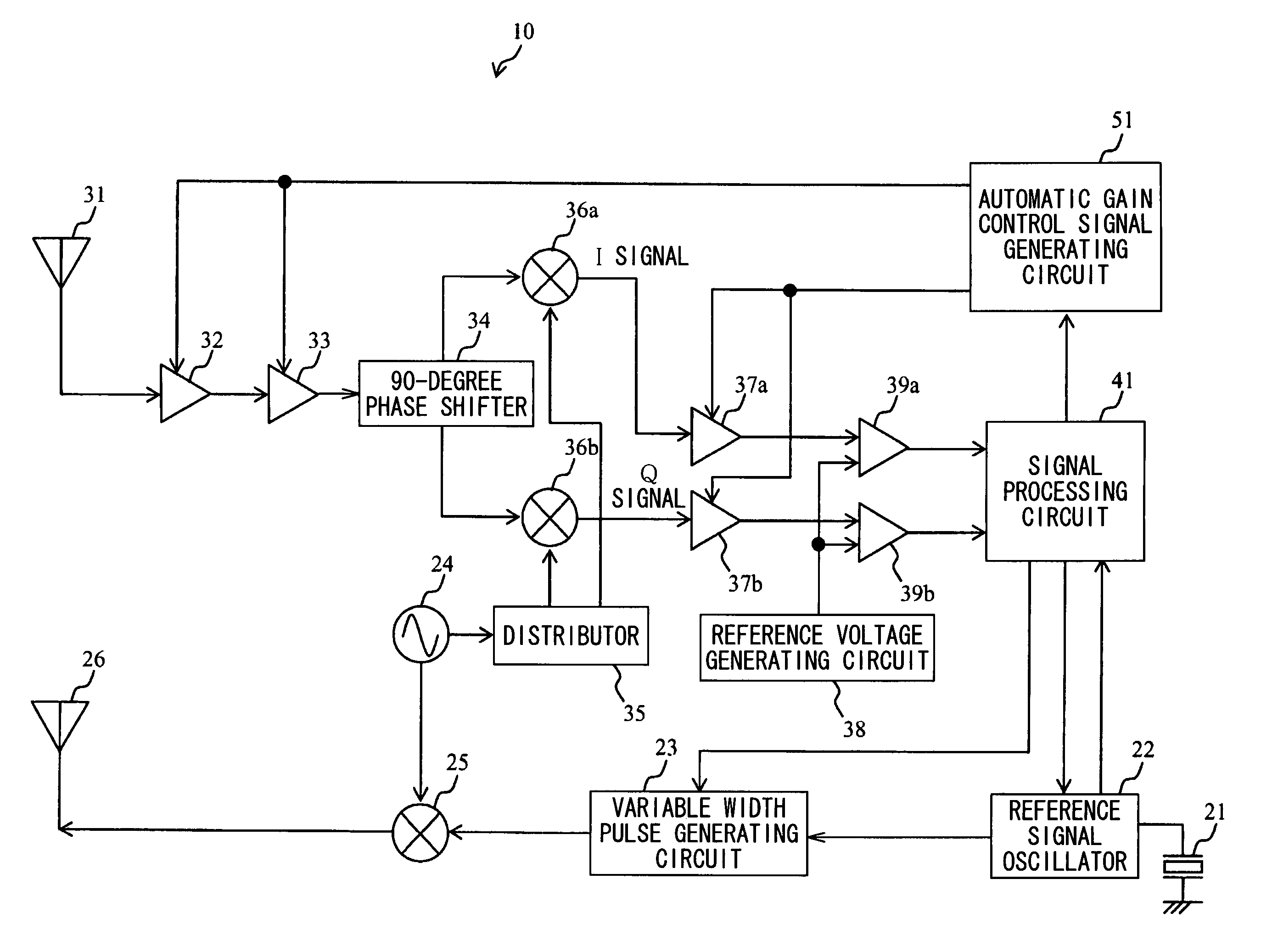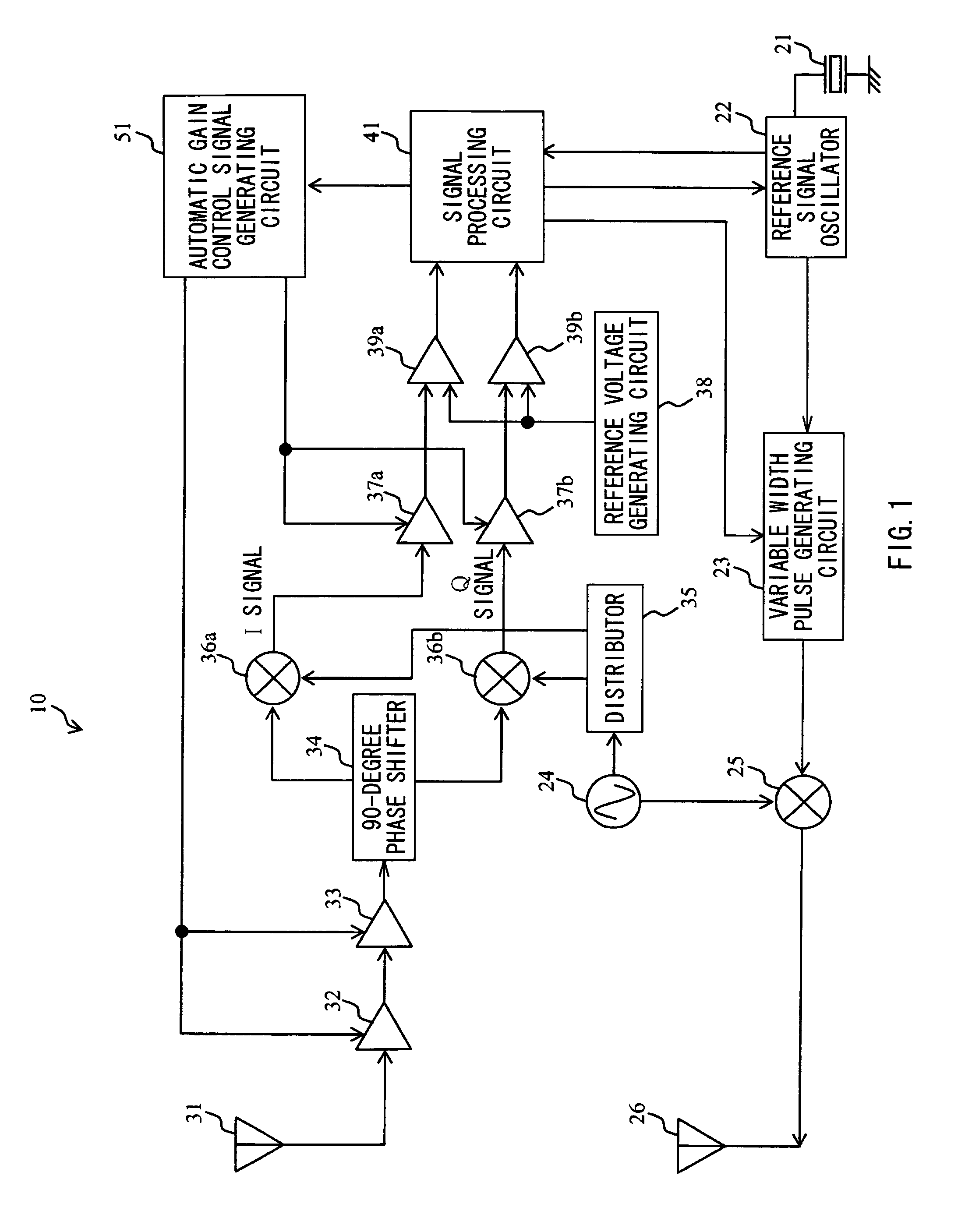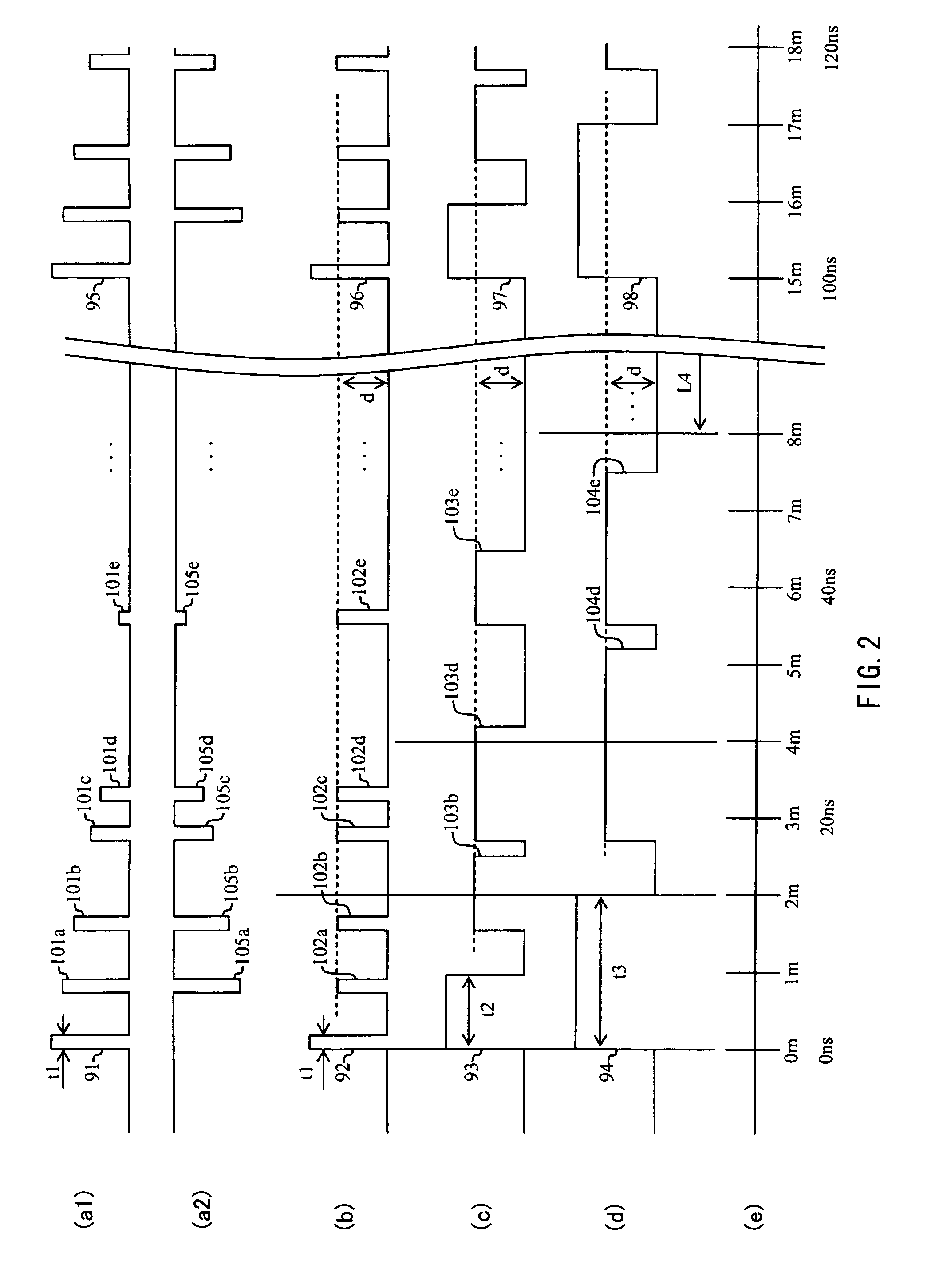Pulse radar system
a pulse radar and pulse wave technology, applied in the field of pulse radar systems, can solve the problems of insufficient distance resolution between obstacles at short distances, difficult to stably control the gain of the reception pulse wave, etc., and achieve the effect of preventing a decline in the s/n ratio and high accuracy
- Summary
- Abstract
- Description
- Claims
- Application Information
AI Technical Summary
Benefits of technology
Problems solved by technology
Method used
Image
Examples
Embodiment Construction
[0028]A preferred embodiment will be described in detail below referring to the accompanying drawings. The present invention is not limited to the following embodiment.
[0029]FIG. 1 shows a block diagram for describing an example of a pulse radar system according to an embodiment of the invention, and is a block diagram for describing the configuration of the pulse radar system. In FIG. 1, a reference numeral 21 designates an oscillator which outputs an oscillation signal as a reference of the pulse radar system; a reference numeral 22 designates a reference signal oscillator which divides the oscillation signal to generate a reference signal; a reference numeral 23 designates a variable width pulse generating circuit which varies the pulse widths of transmission pulses having a predetermined period generated on the basis of the reference signal and outputs the transmission pulses; a reference numeral 24 designates an oscillator which oscillates at a carrier frequency; a reference nu...
PUM
 Login to View More
Login to View More Abstract
Description
Claims
Application Information
 Login to View More
Login to View More - R&D
- Intellectual Property
- Life Sciences
- Materials
- Tech Scout
- Unparalleled Data Quality
- Higher Quality Content
- 60% Fewer Hallucinations
Browse by: Latest US Patents, China's latest patents, Technical Efficacy Thesaurus, Application Domain, Technology Topic, Popular Technical Reports.
© 2025 PatSnap. All rights reserved.Legal|Privacy policy|Modern Slavery Act Transparency Statement|Sitemap|About US| Contact US: help@patsnap.com



